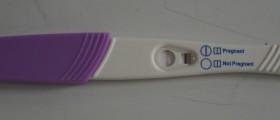
Introduction
Some couples are lucky enough to get pregnant and have a child with almost no effort at all. However, many couples, who are otherwise healthy and do not have fertility issues, seem to struggle with becoming pregnant and invest a lot of efforts into planning and trying.
It is important to realize that a woman cannot become pregnant simply by having sex at any point in the cycle. Sexual intercourse needs to take place on certain days of a woman’s menstrual cycle in order for the sperm to reach and fertilize a mature and released egg.
Couples who are trying to become pregnant are well aware that the best time to make babies is around ovulation days. However, pinpointing the exact time of the ovulation may be a difficult task.
Ovulation
Ovulation is a process in which a mature egg is released from the ovaries, where it was formed and grown, through the fallopian tubes. An egg, or sometimes more than one egg, is released each month. It can be either fertilized by sperm and implanted into the endometrium, where it will grow and transform into an embryo, or if, left unfertilized, it will be evacuated from the uterus along with unused endometrium tissue that sheds each month in form of menstrual bleeding.
In most cases the fertilization takes place high in the fallopian tubes. If the egg is fertilized, it will travel down in the uterus where it will tap into the necessary blood supply. Knowing exactly when this happens is the best way to assure the fertilization takes place, which is why most of pregnancy planning methods rely on ovulation as the single most important indicator of fertility.
Ovulation and fertility signals
Even in women with highly regular menstrual cycle it is not easy to pinpoint the exact days of the ovulation. Ovulation generally takes place in the middle of the cycle. In a 28-day cycle, the general time of the ovulation around the day 14, counting from the first day of the period. Several days before and after that time are also potentially fertile.
Still, those who want to be absolutely sure about which days are fertile should use other methods, such as calculating and keeping track of all the important points in the cycle, as well as monitoring certain signs and signals the body sends before, during and after ovulating.
Core body temperature is one of those signals, because it slightly raises during ovulation. In order to observe the increase in temperature, it is necessary to measure core body temperature each day of the cycle and see when it slightly spikes. The temperature should be measured in the morning, before eating or drinking anything, and in the evening. The numbers should always be exact, not rounded up, because the increase is really only slight.
Other signs of ovulation include mild breast tenderness, slight soreness in the area of the ovaries and mild abdominal pain. The texture and viscosity of cervical mucus also changes during fertile days, but this parameter can be a bit difficult to measure at home.
















Your thoughts on this
Loading...